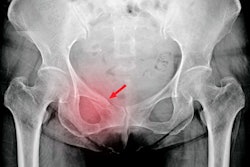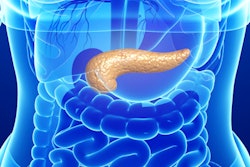
Dual-energy x-ray absorptiometry (DEXA) tests are better than traditional clinical obesity measures for predicting diabetes and heart disease in older women, according to an August 31 study in Mayo Clinic Proceedings.
The finding is striking on its own, but more so given the evidence comes from the same scans used to screen patients for osteoporosis, wrote a team of U.S. researchers.
"Our findings provide motivation for health care systems or health maintenance organizations to generate and use DEXA-derived adiposity measures from the same scans used to screen members for osteoporosis," wrote first author Deepika Laddu, PhD, of the University of Chicago, IL.
Laddu and a team of U.S. researchers compared DEXA obesity measures with traditional clinical measures -- body mass index, waist circumference, and waist-to-hip ratio -- and found DEXA better predicted risks for diabetes and atherosclerosis outcomes in a large group of postmenopausal women.
"Improved discrimination was observed independent of even the best clinical traditional measure, [waist circumference]," the team wrote.
Cardiometabolic diseases associated with obesity, such as diabetes, atherosclerosis, and congestive heart failure, are collectively the number one cause of death in the world. Despite their common use, the accuracy of traditional clinical measures for measuring abdominal fat in older adults remains controversial, according to the authors.
DEXA is used widely to measure bone mineral density in osteoporosis screening, but it has also proven effective in research for assessing whole-body and regional adiposity with reasonably high accuracy. Few studies, especially any in a large cohort of postmenopausal women, have compared the predictive accuracy of the measures, the authors wrote.
In this study, a team from nine U.S. centers investigated whether DEXA estimates of adiposity, specifically percentages of total-body and trunk fat (%TrF), in older women could improve risk prediction for cardiometabolic diseases compared to traditional clinical measures.
The researchers analyzed data on 9,744 women between the ages of 50 and 79 participating in the Women's Health Initiative, a long-term project started by the U.S. National Institutes of Health in 1991 to develop strategies to prevent osteoporosis and other disease in postmenopausal women.
The researchers included women who had DEXA scans and were free of cardiovascular disease and diabetes at baseline between October 1993 and December 1998. The women were followed through September 2015. They incorporated baseline traditional clinical measures and DEXA %TrF estimates into multivariable Cox proportional hazards models to determine the women's risk of diabetes, atherosclerotic cardiovascular diseases, heart failure, and death.
A total of 1,327 diabetes cases, 1,266 atherosclerotic cardiovascular disease cases, 292 heart failure cases, and 1,811 deaths from any cause accrued during a median follow-up of up to 17.2 years.
The largest hazard ratio observed per 1 standard deviation increase of an adiposity measure was for %TrF and diabetes (1.77), followed by %TrF and atherosclerotic cardiovascular disease (1.22). These hazard ratios remained statistically significant for both diabetes and atherosclerotic cardiovascular disease even after adjusting for waist circumference, the best traditional surrogate measure of adiposity, the researchers found.
In addition, percentage of trunk fat was also the only adiposity measure to demonstrate statistically significant improved concordance probability estimates over body mass index, waist circumference, and waist-to-hip ratio for diabetes and atherosclerotic cardiovascular disease.
"The single most striking finding of our multivariable analyses was the magnitude of association observed between %TrF and the risk of incident diabetes," the researchers wrote.
DEXA is already recommended in all women over the age of 65 for osteoporosis screening. For women in this age range, however, studies have shown a drop in the predictive ability of traditional clinical measures of adiposity, the authors wrote.
Using DEXA to improve risk prediction for cardiometabolic diseases among patients already being screened for osteoporosis presumably would have little impact on cost of care, they suggested.
"Improving prediction algorithms to identify individuals at risk of adverse adiposity-related health effects has the potential to impact public health substantially," the researchers concluded.




















